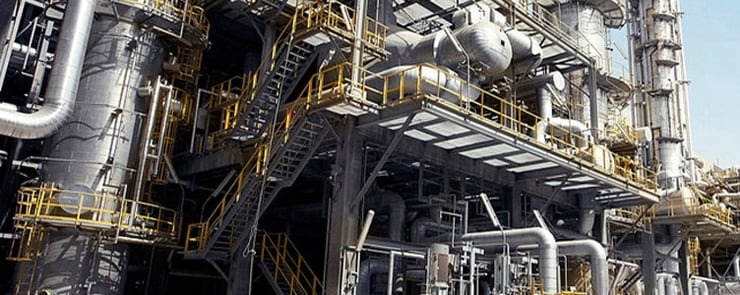
It was a dark day for a Wisconsin chemical processing plant’s waste treatment fiberglass tank. The ten foot diameter tank appeared to be in good shape upon initial review, but a quick peek inside would reveal the horrific truth. Thirteen years of lime and phosphoric sludge had settled inside the fiberglass tank, about 2-3 feet of it to be exact. But, here’s the worst of it. The build-up of sludge was at a high enough point to cover the outlet, so the liquid inside couldn’t be pumped out, hindering the tank from doing its job.
Any solids contained in a tank must be kept in suspension to prevent them from settling out, which is usually accomplished by recirculation. However, with the amount of sludge build-up already in the tank, there was no going back. Something needed to be done.
The maintenance team reached out to their Crane Engineering Account Manager to see what it would take to clean out the tank, so they could address the outlet problem and improve circulation to help prevent the solids from settling out.
The solution was simple; remove the sludge from the tank.
The sludge was a cake-like material, so the removal process was fairly simple – they used shovels and buckets. After all was said and done, the Crane Engineering team removed 150 cubic feet of sludge, which totaled about 25, 55-gallon drums. Now, that is a lot of sludge!
Next, pipes and fiberglass pads were removed from the tank. The pipes and fiberglass pads were parts of old processes that had not been used in quite some time. This would help to keep solids in suspension, so the tank and pump could function properly.
 Once the sludge was removed, the tank floor revealed signs of damage from the sludge build-up and sludge removal process. Areas where the pads were removed were fiberglassed and a pigmented veil coat was applied. The coating provided a protective layer between the fiberglass tank and sludge, so any future chemical corrosion would be kept at bay.
Once the sludge was removed, the tank floor revealed signs of damage from the sludge build-up and sludge removal process. Areas where the pads were removed were fiberglassed and a pigmented veil coat was applied. The coating provided a protective layer between the fiberglass tank and sludge, so any future chemical corrosion would be kept at bay.
The maintenance team is now re-evaluating and modifying their process, so solids are kept in suspension to prevent significant sludge build-ups such as this from happening again (as well as implementing an annual tank inspection).
Headquarters and Service Center
Located outside Green Bay, WI
707 Ford Street
Kimberly, WI 54136
920-733-4425
OptiFlow Design and Build Center
1002 Truman Street
Kimberly, WI 54136
920-733-4425
Burnsville Service Center
12265 Nicollet Avenue
Burnsville, MN 55337
952-444-1949
Grand Rapids Service Center
26489 Industrial Blvd
Cohasset, MN 55721
952-444-1949
© Copyright 2024. Crane Engineering. All Rights Reserved. Privacy Policy.